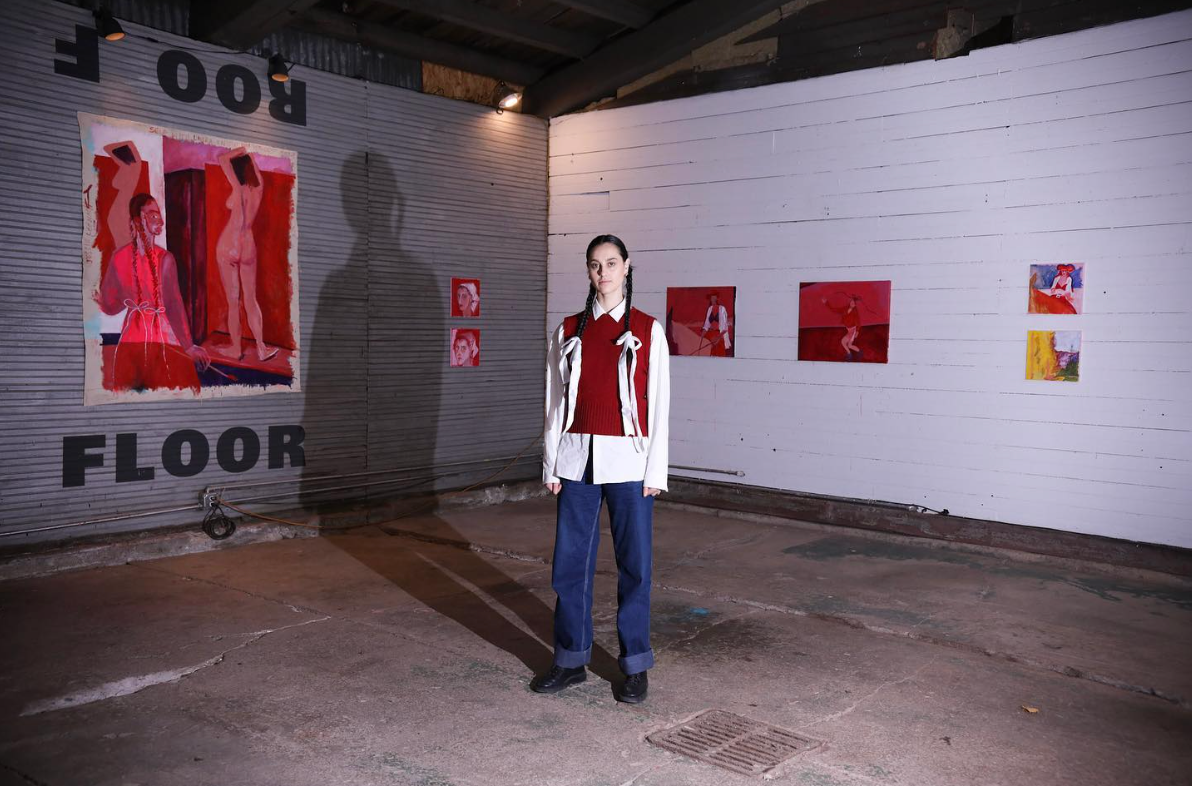An avid reader, Nash drew inspiration from one book in her Stamford studio, titled Steal like an Artist by Austin Kleon. Like any great artist, Nash did not borrow, but stole—liberally, wholeheartedly, funnily, and at times reverentially.
Many of Nash’s appropriations model famous artists such as Frida Kahlo, Paula Modersohn-Becker, Alice Neel, Gwen John, Sarah Lucas, and Tracey Emin, while other works, such as Self as wounded deer, Self as the internet, and Self as Stamford, speak less about the art historical lineage Nash tackled and more directly confront emotions such as vulnerability, fear, and disorientation, but also groundedness, humor, and grace.
Talking about her series, Nash describes the conflicting and constricting role of classical training, in which life drawing (the fundamental format of technical instruction of the classical academy) was for many centuries the domain of men (save for the female model) and copying great works from the past was considered another aspect of schooling, while female artists were relegated to still life and self-portraiture—painting whatever was close at hand, and at the same time, opening themselves up to accusations of narcissism and vulnerability.
By inserting herself into some of the most famous female self-portraits of modern art, Nash not only models herself on the classical training mechanisms of copying but also relives symbolically the doubt, anxiety, oppression, anger, and tenderness these artists express in their works. Nash asks in what space knowledge, empathy, veneration, and critique converge—a space that, she argues, is created by respect and, ultimately, love.
- Choosing a selection results in a full page refresh.
- Opens in a new window.



